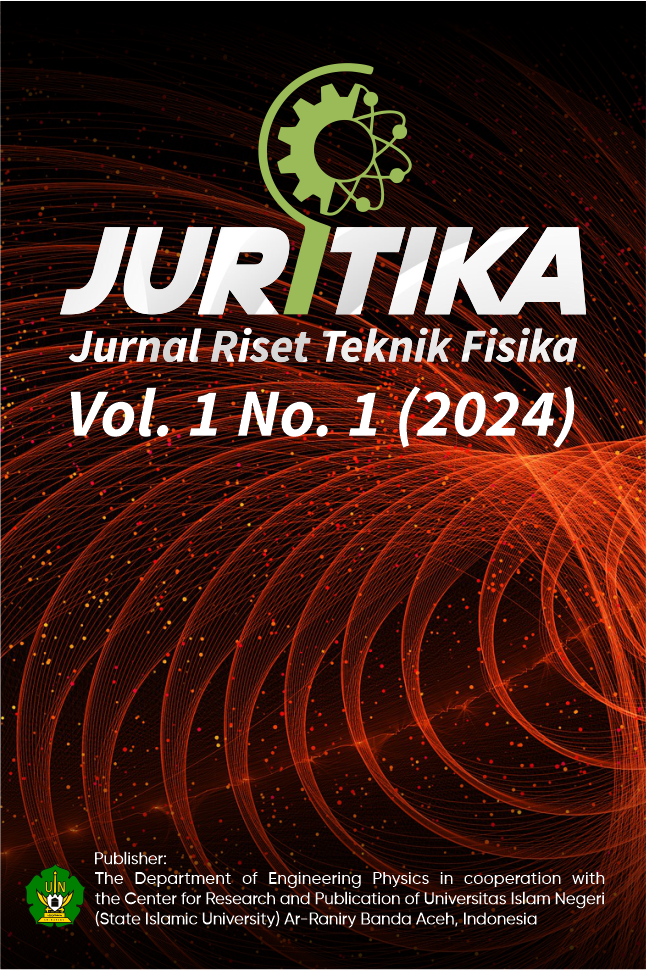Studi Desain Pressurized Water Reactor (PWR) berdaya Sedang berpendingin Air Ringan
Keywords:
K-eff , power distribution , PWRAbstract
Telah dilakukan studi desain reactor PWR menggunakanterasberpendingin air ringan. PWR yang diteliti dapat dioperasikantanpapengisian ulang bahan bakar selama 25 tahun, dalamoptimasi reaktordiatas penulis menggunakan persamaan diffuse multi group 2 dimensi. Kitadapat memonitor komposisi teras, distribusi daya dan perubahan K-eff selama teras beroperasi untuk menjaga keamanan dan kekritisanterasreaktor. Disini digunakan nilai K-eff berkisar 1. Hasil optimasi diperoleh,reaktor ini bisa beroperasi selama 25 tahun.
References
H.A. Abderrahim, D. De Bruyn, M. Dierckx, R. Fernandez, L. Popescu, M. Schyns, A. Stankovskiy, G. Van den Eynde, D. 2019. Vandeplassche Myrrha accelerator driven system programme: recent progress and perspectives. Izvestiya vuzov. Yadernaya Energetika. 2019(2), 29-42. https://doi.org/10.26583/npe.2019.2.03
Arya, (1996), Fundamental of Nuclear Physics. Boson. Allyn and Bacon, Inc.
Asgari, (2007), Computational Neutronics Methods and Transmutation for Fast Reactors, Idaho National Laboratory.
Barros, Graiciany de Paula, Pereira, Claubia, Veloso, Maria A. F., Costa, Antonella L. (2012). Study of an ADS loaded with thorium and reprocessed fuel. Science and Technology of Nuclear Installations, 2012, 934105. https://doi.org/10.1155/2012/934105
Duderstadt, J.J. and Hamilton, (1976) Nuclear Reactor Analysis. New York, John Wile & Sons.
Ivanyuk, (2021), Memoir effect in Langevin approach to the Nuclear Fission Process.
Salvatores, M., Slessarev, I.S., Ritter, G.L., Fougeras, P., Tchistiakov, A.A., Youinou, G.J., & Zaetta, A. (1998). Long-lived radioactive waste transmutation and the role of accelerator driven (hybrid) systems. Nuclear Instruments & Methods in Physics Research Section A-accelerators Spectrometers Detectors and Associated Equipment, 414, 5-20.H. Wolter et al. (2022), Transport Model Comparison Studies of Intermediate-Energy Heavy-Ion Collisions, vol. 12, 2022.
Nakayama, S., Iwamoto, O., Watanabe, Y., & Ogata, K. (2021). JENDL/DEU-2020: deuteron nuclear data library for design studies of accelerator-based neutron sources. Journal of Nuclear Science and Technology, 58(7), 805–821. https://doi.org/10.1080/00223131.2020.1870010
Ilham, M., Raflis, H., & Su'ud, Z. (2020). Full core optimization of small modular gas-cooled fast reactors using OpenMC program code. Journal of Physics: Conference Series, 1493, 012007. https://doi.org/10.1088/1742-6596/1493/1/012007
T. Setiadipura, et. al. (2015), Preliminary neutronic design of high burnup OTTO cycle pebble bed reactor, Atom Indones., vol. 41, no. 1, pp. 7–15.
Setiadipura, T., Irwanto, D., & Zuhair, Z. (2015). Preliminary neutronic design of high burnup OTTO cycle pebble bed reactor. Atom Indonesia, 41(1), 7.
Shimada, K., Ishizuka, C., Ivanyuk, F. A., & Chiba, S. (2021). Dependence of total kinetic energy of fission fragments on the excitation energy of fissioning systems. Physical Review C, 104(5), 054609. https://doi.org/10.1103/PhysRevC.104.054609
Downloads
Published
Issue
Section
License
Copyright (c) 2024 Jurnal Riset Teknik Fisika

This work is licensed under a Creative Commons Attribution-NonCommercial-ShareAlike 4.0 International License.






